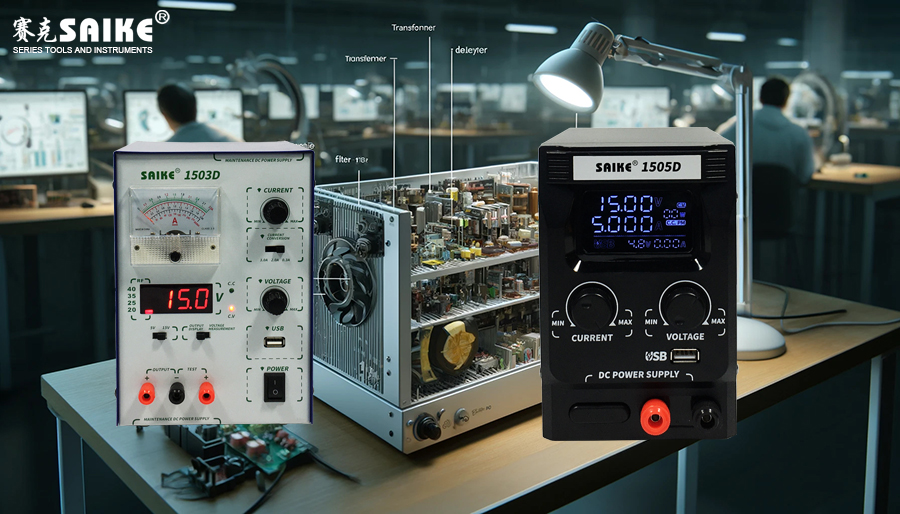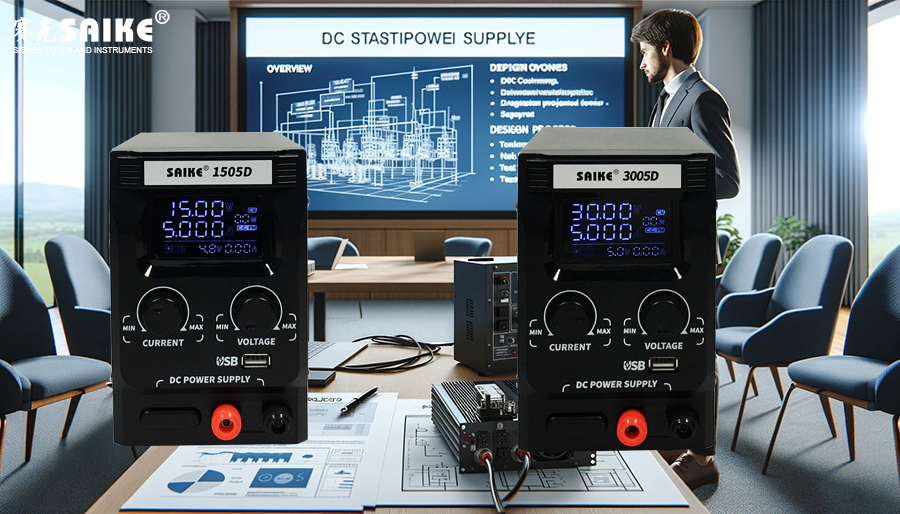
SK-YJ000ZLWYDY-KP 100002
A DC stabilized power supply is a complex electronic device designed to ensure a constant output voltage under various loads and input conditions. Understanding its fundamental components aids in better comprehending its working principles and performance characteristics. Here are the main components of a DC stabilized power supply and their functions:
I. Key Components
1.Transformer
– Function: Adjusts the input voltage to the desired level, ensuring power safety and voltage adaptability.
– Type: It can be either a step-up or step-down transformer, depending on the need.
2.Rectifier
– Function: Converts alternating current (AC) to direct current (DC). This is achieved by using diodes or a bridge rectifier, where diodes allow current to flow in only one direction, generating pulsed DC.
– Type: Common forms include half-wave rectification and full-wave rectification.
3.Filter
– Function: Smooths the pulsed DC after rectification, reducing voltage fluctuations and noise. This is typically done using capacitors and sometimes inductors to eliminate high-frequency oscillations in the current.
– Type: Filters can be simple capacitive filters or more complex π-type or L-type filters.
4.Voltage Stabilizing Circuit
– Function: Ensures stable output voltage regardless of changes in input voltage or load. This is usually achieved through the use of linear regulators or switching regulators.
– Type:
– Linear Regulator: Utilizes the adjustable characteristics of transistors to absorb the voltage difference between input and output.
– Switching Regulator: Provides more efficient voltage conversion through high-frequency switching techniques, energy storage components (such as inductors and capacitors), and control circuits.
5.Control Circuit
– Function: Monitors and adjusts the power supply output, ensuring it operates within a preset voltage range. The control circuit may include a microprocessor, feedback mechanisms, and various sensors to adjust and optimize performance in real-time.
– Type: Typically comprises analog or digital circuits, depending on the design’s complexity and precision requirements.
6.Protection Circuit
– Function: Protects the power supply from potential hazards such as overloads, short circuits, and overheating. Protection mechanisms ensure that the power supply and connected devices are not damaged under abnormal conditions.
– Type: Includes overvoltage protection (OVP), overload protection (OLP), short circuit protection (SCP), etc.
II. Conclusion
The basic components of a DC stabilized power supply work together to provide a stable and safe power output, suitable for various electronic devices and applications. From transformers to control and protection circuits, each component is crucial to ensuring the reliability and efficiency of the power supply. Understanding these fundamental components helps make more informed decisions when selecting, using, and maintaining stabilized power supplies.


